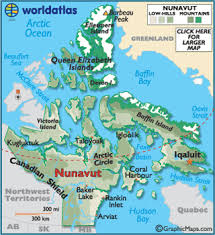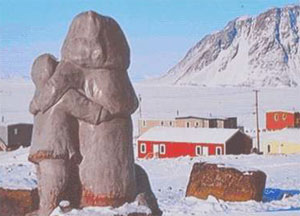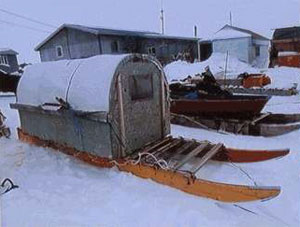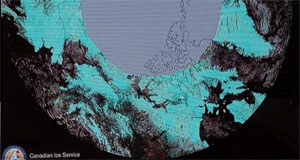Dryden Doctor Discovers the Wonders of the High Arctic
Posted by John Borst
on Nov 10, 2013
When local anesthesiologist John Dove retired he did not foresee adventures in Canada's High Arctic in his future. But when the called went out for locums in Nunavut, Canada's new "Territory", he and his wife Alison jumped at the chance to see the "real North"

Dove began with a map of Nunavut. Nunavut is the least populous but the largest area of both the provinces and territories of Canada. It is one of the most remote and sparsely settled regions in the world, with a population of just 31,906 in an area of 1,877,787 km2 (725,018 sq mi) of land and 160,935 km2 (62,137 sq mi) of water. That is about 64 sq km of space for every man, woman and child.
Cornwallis and Ellesmere Islands featured strongly in the history of the Cold War during the 1950s. Concerned about the area's strategic geopolitical position, the federal government relocated seventeen Inuit families from Inukjuak, Quebec (on the Ungava Peninsula) to Resolute and Grise Fiord. They were relocated after being promised  homes and game to hunt, but the relocated people discovered no buildings and very little familiar wildlife. They were told that they would be returned home after a year if they wished, but this offer was later withdrawn as it would damage Canada's claims to sovereignty in the area and the Inuit were forced to stay. After the Report on the 1953-55 Relocation the government paid $10 million in compensation to those affected and their descendants.
homes and game to hunt, but the relocated people discovered no buildings and very little familiar wildlife. They were told that they would be returned home after a year if they wished, but this offer was later withdrawn as it would damage Canada's claims to sovereignty in the area and the Inuit were forced to stay. After the Report on the 1953-55 Relocation the government paid $10 million in compensation to those affected and their descendants.
 homes and game to hunt, but the relocated people discovered no buildings and very little familiar wildlife. They were told that they would be returned home after a year if they wished, but this offer was later withdrawn as it would damage Canada's claims to sovereignty in the area and the Inuit were forced to stay. After the Report on the 1953-55 Relocation the government paid $10 million in compensation to those affected and their descendants.
homes and game to hunt, but the relocated people discovered no buildings and very little familiar wildlife. They were told that they would be returned home after a year if they wished, but this offer was later withdrawn as it would damage Canada's claims to sovereignty in the area and the Inuit were forced to stay. After the Report on the 1953-55 Relocation the government paid $10 million in compensation to those affected and their descendants.Iqaluit ( formerly Frobisher Bay) is the territorial capital. It was founded in 1942 as an American air base, intended to provide a stop-over and refueling site for short range aircraft being ferried across the Atlantic to support the war effort in Europe.
 |
An Arctic "camper", used to sleep in during the spring hunt. |
 |
The community of Resolute where about half of the Inuit families from Inukjuak were resettled with tragic results. |
 |
Black is open water, turquoise is retreating or melting ice, and grey is the ice cap. |
Rotarians were treated to over 80 pictures and many more stories of life in Canada’s Far North. The final picture from Environment Canada showed the reduction of sea ice in the Arctic. This has led to more problems with polar bears in Iqualuit but more ominously it may have even bigger consequences for all humanity.
